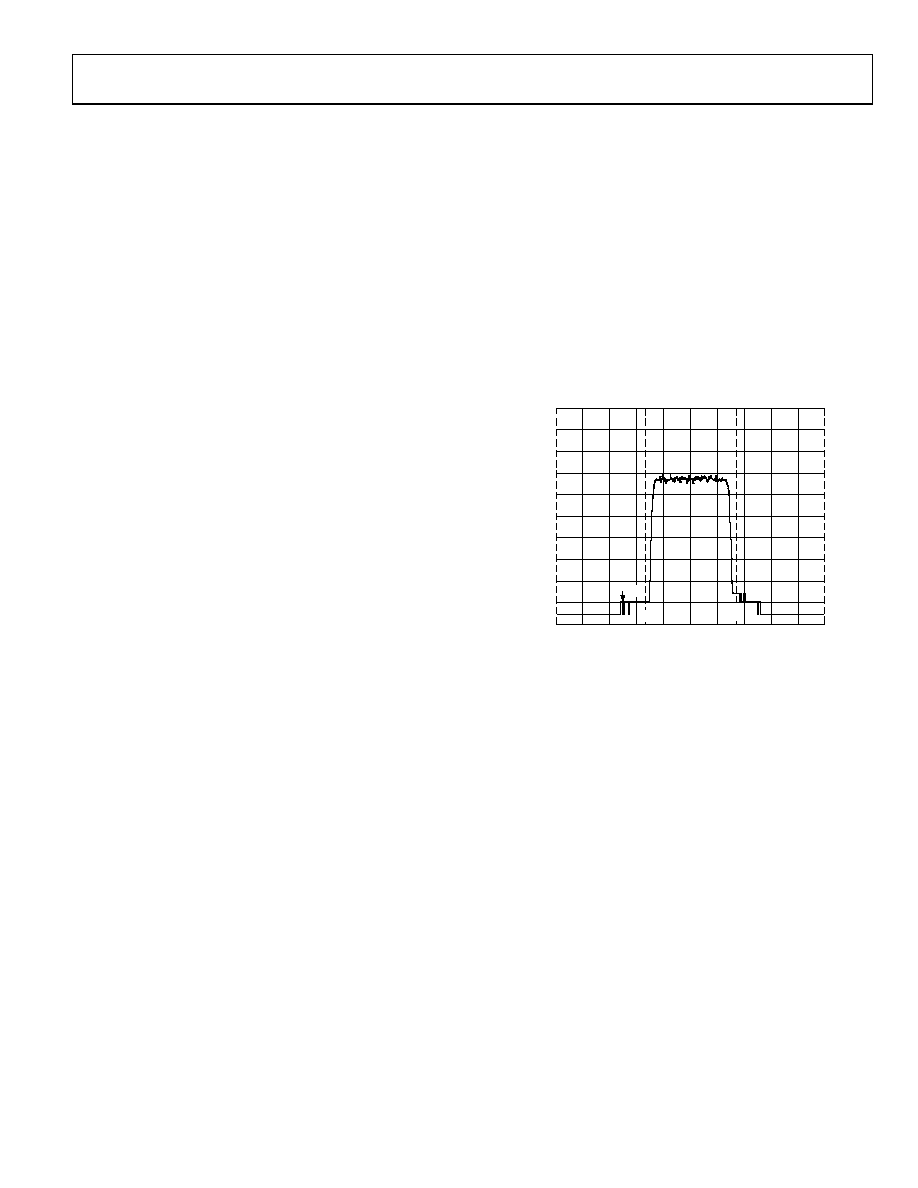- 您現(xiàn)在的位置:買賣IC網(wǎng) > PDF目錄17063 > AD9709-EBZ (Analog Devices Inc)BOARD EVAL FOR AD9709 PDF資料下載
參數(shù)資料
| 型號: | AD9709-EBZ |
| 廠商: | Analog Devices Inc |
| 文件頁數(shù): | 16/32頁 |
| 文件大?。?/td> | 0K |
| 描述: | BOARD EVAL FOR AD9709 |
| 產(chǎn)品培訓(xùn)模塊: | DAC Architectures |
| 標(biāo)準(zhǔn)包裝: | 1 |
| 系列: | TxDAC® |
| DAC 的數(shù)量: | 2 |
| 位數(shù): | 8 |
| 采樣率(每秒): | 125M |
| 數(shù)據(jù)接口: | 并聯(lián) |
| 設(shè)置時間: | 35ns |
| DAC 型: | 電流 |
| 工作溫度: | -40°C ~ 85°C |
| 已供物品: | 板 |
| 已用 IC / 零件: | AD9709 |
| 相關(guān)產(chǎn)品: | AD9709ASTZRL-ND - IC DAC 8BIT DUAL 125MSPS 48LQFP AD9709ASTZ-ND - IC DAC 8BIT DUAL 125MSPS 48-LQFP |
第1頁第2頁第3頁第4頁第5頁第6頁第7頁第8頁第9頁第10頁第11頁第12頁第13頁第14頁第15頁當(dāng)前第16頁第17頁第18頁第19頁第20頁第21頁第22頁第23頁第24頁第25頁第26頁第27頁第28頁第29頁第30頁第31頁第32頁

AD9709
Rev. B | Page 23 of 32
I and Q digital data can be fed into the AD9709 in two ways. In
dual port mode, the digital I information drives one input port,
and the digital Q information drives the other input port. If no
interpolation filter precedes the DAC, the symbol rate is the rate
at which the system clock drives the CLK and WRT pins on the
AD9709. In interleaved mode, the digital input stream at Port 1
contains the I and the Q information in alternating digital words.
Using IQSEL and IQRESET, the AD9709 can be synchronized
to the I and Q data streams. The internal timing of the AD9709
routes the selected I and Q data to the correct DAC output. In
interleaved mode, if no interpolation filter precedes the AD9709,
the symbol rate is half that of the system clock driving the digital
data stream and the IQWRT and IQCLK pins on the AD9709.
CDMA
Code division multiple access (CDMA) is an air transmit/receive
scheme where the signal in the transmit path is modulated with a
pseudorandom digital code (sometimes referred to as the spreading
code). The effect of this is to spread the transmitted signal across
a wide spectrum. Similar to a discrete multitone (DMT) wave-
form, a CDMA waveform containing multiple subscribers can
be characterized as having a high peak to average ratio (that is,
crest factor), thus demanding highly linear components in the
transmit signal path. The bandwidth of the spectrum is defined
by the CDMA standard being used, and in operation it is
implemented by using a spreading code with particular
characteristics.
Distortion in the transmit path can lead to power being transmitted
out of the defined band. The ratio of power transmitted in-band to
out-of-band is often referred to as adjacent channel power (ACP).
This is a regulatory issue due to the possibility of interference
with other signals being transmitted by air. Regulatory bodies
define a spectral mask outside of the transmit band, and the ACP
must fall under this mask. If distortion in the transmit path causes
the ACP to be above the spectral mask, filtering or different
component selection is needed to meet the mask requirements.
Figure 45 displays the results of using the application circuit shown
in Figure 44 to reconstruct a wideband CDMA (W-CDMA) test
vector using a bandwidth of 8 MHz that is centered at 2.4 GHz
and sampled at 65 MHz. The IF frequency at the DAC output is
15.625 MHz. The adjacent channel power ratio (ACPR) for the
given test vector is measured at greater than 54 dB.
cu1
==
–80
–120
–70
–90
–110
–50
–60
–100
–40
CENTER 2.4GHz
–130
–30
(d
B
)
C0
c11
FREQUENCY
cu1
C0
c11
SPAN 30MHz
3MHz
00
60
6-
04
6
Figure 45. CDMA Signal, 8 MHz Chip Rate Sampled at 65 MSPS,
Recreated at 2.4 GHz, Adjacent Channel Power > 54 dB
相關(guān)PDF資料 |
PDF描述 |
|---|---|
| RBM11DRTI-S13 | CONN EDGECARD 22POS .156 EXTEND |
| ECM25DCSN | CONN EDGECARD 50POS DIP .156 SLD |
| AD9708-EBZ | BOARD EVAL FOR AD9708 |
| RBM11DRKI-S13 | CONN EDGECARD 22POS .156 EXTEND |
| AD9706-EBZ | BOARD EVAL FOR AD9706 |
相關(guān)代理商/技術(shù)參數(shù) |
參數(shù)描述 |
|---|---|
| AD9709-EBZ1 | 制造商:AD 制造商全稱:Analog Devices 功能描述:8-Bit, 125 MSPS, Dual TxDAC Digital-to-Analog Converter |
| AD9712 | 制造商:AD 制造商全稱:Analog Devices 功能描述:12-BIT, 100MSPS D/A CONVERTERS |
| ad97128bsq/883b | 制造商:Analog Devices 功能描述: |
| AD9712AJN | 制造商:未知廠家 制造商全稱:未知廠家 功能描述:12-Bit Digital-to-Analog Converter |
| AD9712AJP | 制造商:未知廠家 制造商全稱:未知廠家 功能描述:12-Bit Digital-to-Analog Converter |
發(fā)布緊急采購,3分鐘左右您將得到回復(fù)。